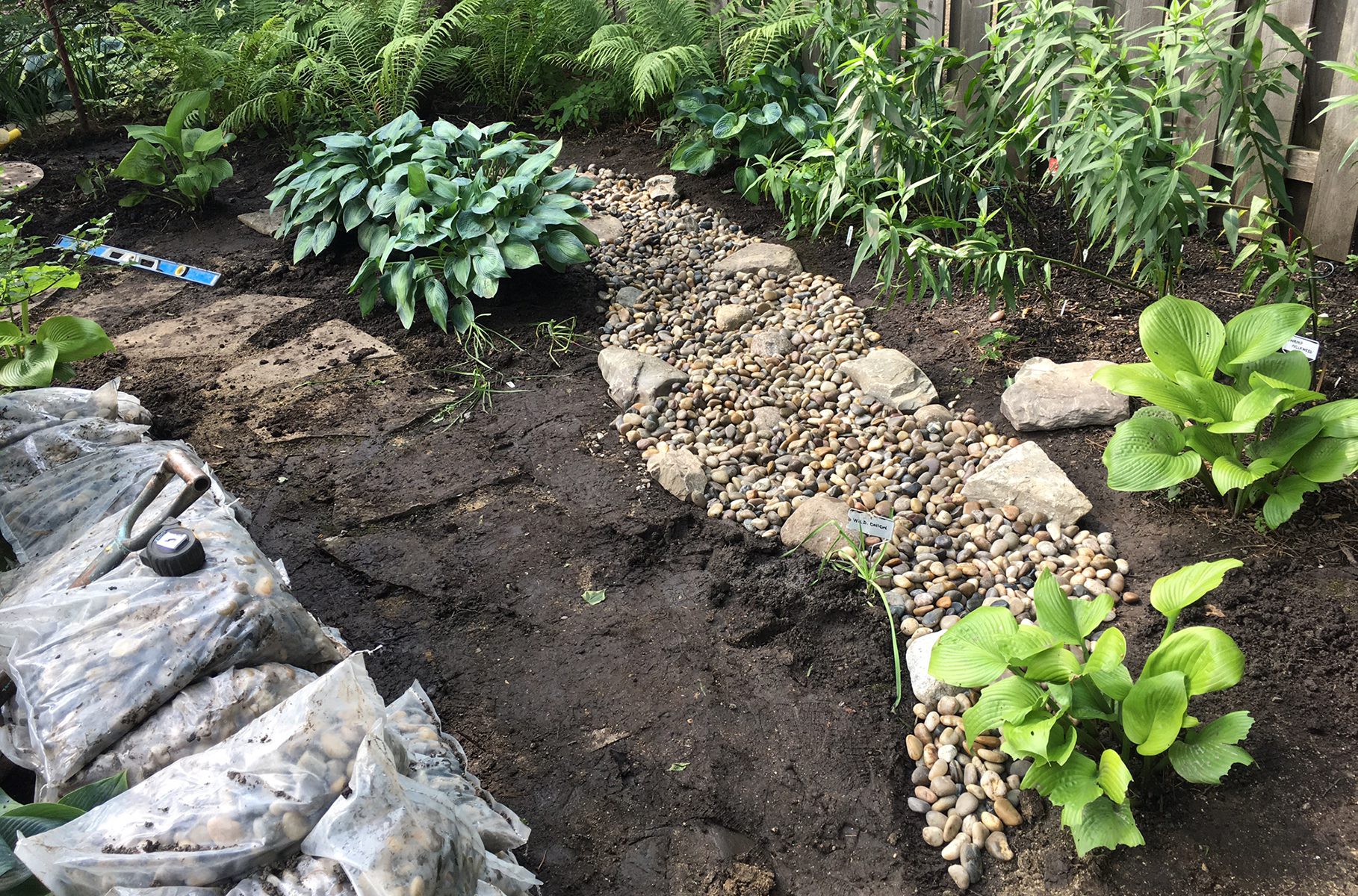



As houses become larger and yards become smaller, the area in which rain can be absorbed has been shrinking in recent years. Homeowners are also incorporating features such as outdoor kitchens, patios, and other outdoor living features that do not necessarily include green space.
While public storm systems are designed to accommodate a certain amount of rain, heavy rainfall can cause the sewers to become overloaded and deposit water back into the property or even into basements and foundations. One way that homeowners have been mitigating this overflow is through the use of rain gardens.
Rain gardens offer a creative and visually appealing way to control rainwater runoff on your property. Some homeowners choose to incorporate native flowers such as blazing star, bee balm, great blue lobelia, and other plants that can tolerate both standing water and long periods of dryness, but a dry streambed is another option that can be used to divert and manage rain water as well.
One of our clients, whose house was designed by the award-winning DeBaker Design Group, struggled with drainage issues on their property and wanted to incorporate natural features like stones and boulders to help mitigate the runoff.
After determining the location of underground utilities, we carved out an area that measured about 3-6’ deep and arranged the underground pipe to discharge excess water into this area.
We then filled in this naturally low area with gravel.
Finally, we carefully arranged a variety of colorful rocks and boulders on the surface, disguising the underground drainage basin.
Now, rainwater organically flows into this area and holds the water until it can be absorbed into the ground or is evaporated by the sun. This process only takes a few days and does not attract mosquitos or other insects that need at least seven days for their eggs to hatch. Rain gardens can potentially even help with filtering out pollutants in the environment.
Downspouts and sump pumps can be diverted into rain gardens being used as overflow containment areas. The key is to keep water out of your home’s basement and your neighbor’s yard as well.
For those who would like plants incorporated into their rain garden, the graveled area simply needs a layer of soil near the surface that can be planted with specific perennials and shrubs that tolerate wet and dry conditions.
Whether you’d like a dry river streambed or a traditional garden lush with plants, rain gardens can easily and inconspicuously be designed to fit into your existing landscape. Plus, many municipalities offer incentives such as rebates to help offset the cost of installation. Check with your local village for more information.
Contact us today to find out how we can help you incorporate a rain garden into your landscape.

Aaron Schlines